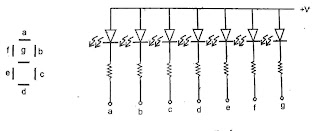Light Emitting Diode (LED)
Light-emitting diode, commonly known as LED is a diode that will give off unstable light when it is energized. It works based on electroluminescence. Electroluminescence is a process that changes an electrical input to light output, the opposite of a photovoltaic effect.
Structure of LEDs
Based on the structure, LEDs are classified as surface-emitting LEDs and edge-emitting LEDs. The structure of surface-emitting LEDs is shown in Fig (a). In the surface-emitting structure, light radiates perpendicular to the plane of the PN junction. On the other hand, in edge-emitting LEDs, the light is confined to a plane and radiates parallel to the junction as shown in Fig (b).
The symbol of LED is shown in Fig. When a diode is forward biased, the free electrons from the n-side and holes from the p side move towards the junction. The electrons from the n-side cross the junction and fall into holes. That is, recombination takes place. Since the electron falls from a high energy level to a lower energy level during the recombination, it radiates energy. If the diode is of silicon or germanium type, then the energy goes off in the form of heat. In other materials such as gallium arsenide phosphide (GaAs) or gallium phosphide (Gap), the energy radiates as light. The color of the light the LED emits depends on the wavelength of the light. Table 1.4 shows the list of components, wavelength, and the color of LEDs.
A number of LEDs can be combined to form an electronic display. One of the most common electronic displays is the seven-segment display shown in Fig.
Vo The seven-segment display shown in Fig.
The symbol of LED in Fig is known as common anode form since all nodes are connected to a common point. If a positive voltage with respect to ground is connected to the common anode each individual segment is activated.
Applications
1. LEDs are more popularly used in displays clocks, audio, and video traffic lights.
2. It is also used as light source in optical fiber communication equipments.





Post a Comment